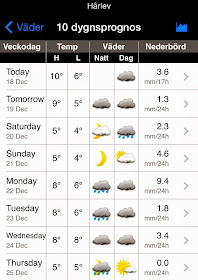When we think of Honeybees we mainly picture Worker Bees, Queen Bee and Drones but is that all there is to this being we call the Honeybee "Colony"?
First and foremost we are approaching this organism from a wrong perspective; we think of them as a "colony". But are they really a colony? If Honeybee Super-organism is a colony then our very human body is also a colony.
Our body is made of millions of cells and bacteria, all sorts of microscopic phenomena like neurons and atoms forming molecules which all interact with one another and all that without our will or control. Of course our body is not a colony but an organism.
Now, if you place dozen humans into a collective they would be a colony. If we place dozen Honeybee families together that too would be a colony (we call that an Apiary). But unlike humans those separate "colonies" do not help one another as humans would do in a colony.
That said, Honeybee "colony" is rather a Super-organism made of many "cells" we call Queen, Workers and Drones but that is not all of it. We know today that various beneficial yeasts, bacteria and mites are part of Bien (Honeybee Super-organism).
Bees can not survive without yeasts because they are the ones creating the so called "bee bread" which they feed to their brood and which is made from pollen-honey and is fermented by the yeasts.
There are over 8000 bacteria associated with Honeybees and over 170 different kind of Mites like the beneficial Stratiolaelaps scimitus which feeds on Varroa mites.
Stratiolaelaps scimitus mite
Worker bees are very much like our cells feeding and building the body and protecting it. Queen and Drones are like our sexual organs. None of the mentioned can survive on their own. Humans can leave the colony and still survive but if a Drone, Queen or a Worker bee leaves the "colony" they sure will perish very fast. Hence "colony" is not the name for them since it is misleading and creating so much confusion about Honeybees today. One of the confusion are the Treatments against Varroa mites. By trying to kill the Varroa we also kill beneficial mites and micro-biome hence creating unbalanced condition within Bien.
Wax Comb is another aspect of Bien; It is their very skeleton, womb for raising brood, storage for Honey and Pollen, it is used for thermo-regulation and bees use it as a telephone line to communicate with each other via vibrations. Take out the wax comb and bees will not be able to survive.
The hollow cavity is their protection from predators and ever changing weather. The hollow conserves the so called hive scent and is used to condense the humid air into water which is used by the bees. It also helps thermo-regulate the inner atmosphere. The hollow cavity is very much like our own skin.
Jurgen Tautz, a very well known Honeybee biologist from Germany (book; Buzz About Bees) compares the Bien to a mammal rather than a colony of individuals for a good reason.
So next time you approach your hive try and look at it as a complex organism rather than a "colony" and see what happens in your mind.

.JPG)
.JPG)
.JPG)
.JPG)




.JPG)
.JPG)

.JPG)
.JPG)
.JPG)
.JPG)
.JPG)
.JPG)
.JPG)
.JPG)
.JPG)
.JPG)
.JPG)
.JPG)
.JPG)
.JPG)
.JPG)
.JPG)
.JPG)
.JPG)
.JPG)
.JPG)




.JPG)
.JPG)
.JPG)
.JPG)
.JPG)
.JPG)
.JPG)
.JPG)
.JPG)
.JPG)
.JPG)
.JPG)
.JPG)
.JPG)
.JPG)
.JPG)
.JPG)
.JPG)
.JPG)
.JPG)
.JPG)
.JPG)